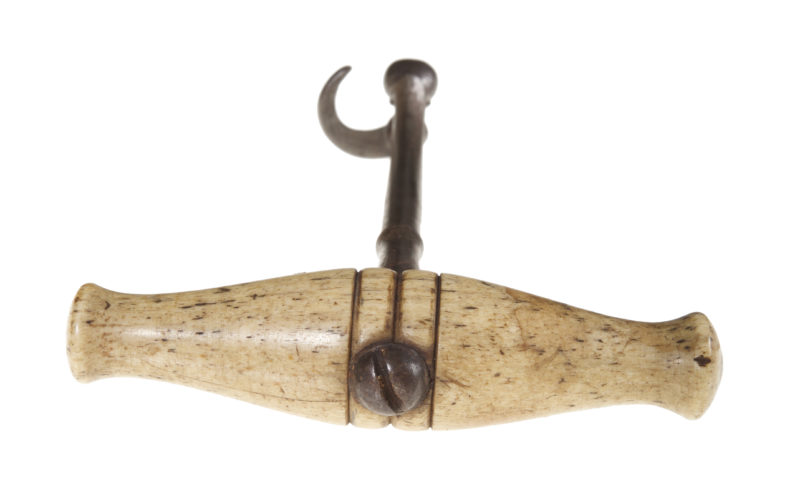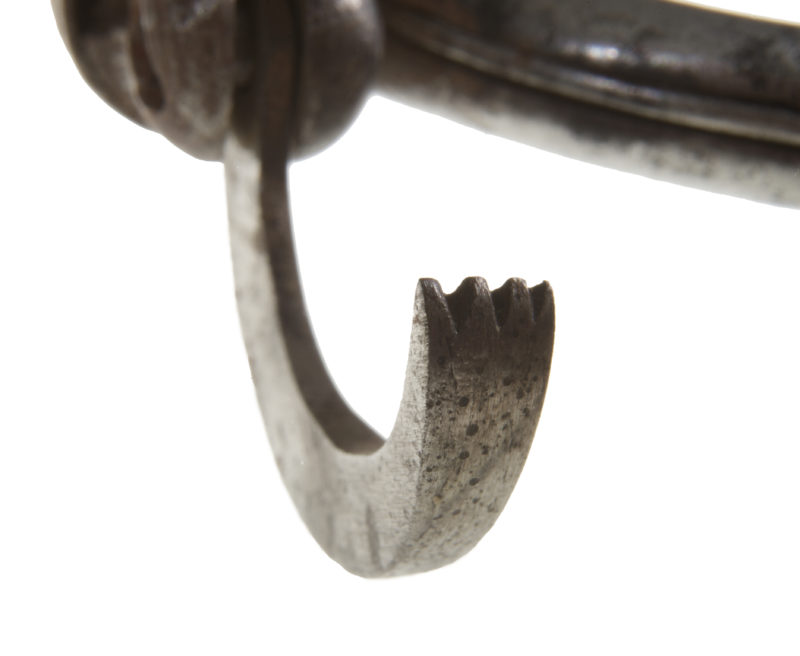Key with Notched Bolster
Key versatility was improved in 1786 with the introduction of a circular, notched bolster housing a swivel to which the claw was attached by a short screw pin. The swivel allowed placement of the claw in incrementally different positions that were held by a spring catch built into the shaft. By repositioning the attached claw, the instrument could be used to draw a left or right, upper or lower tooth. And, with the claw positioned parallel to the shaft, the key would have moved most effectively in an up or down direction, functioning more like a pelican instrument.
Explore this item in the slideshow below.





